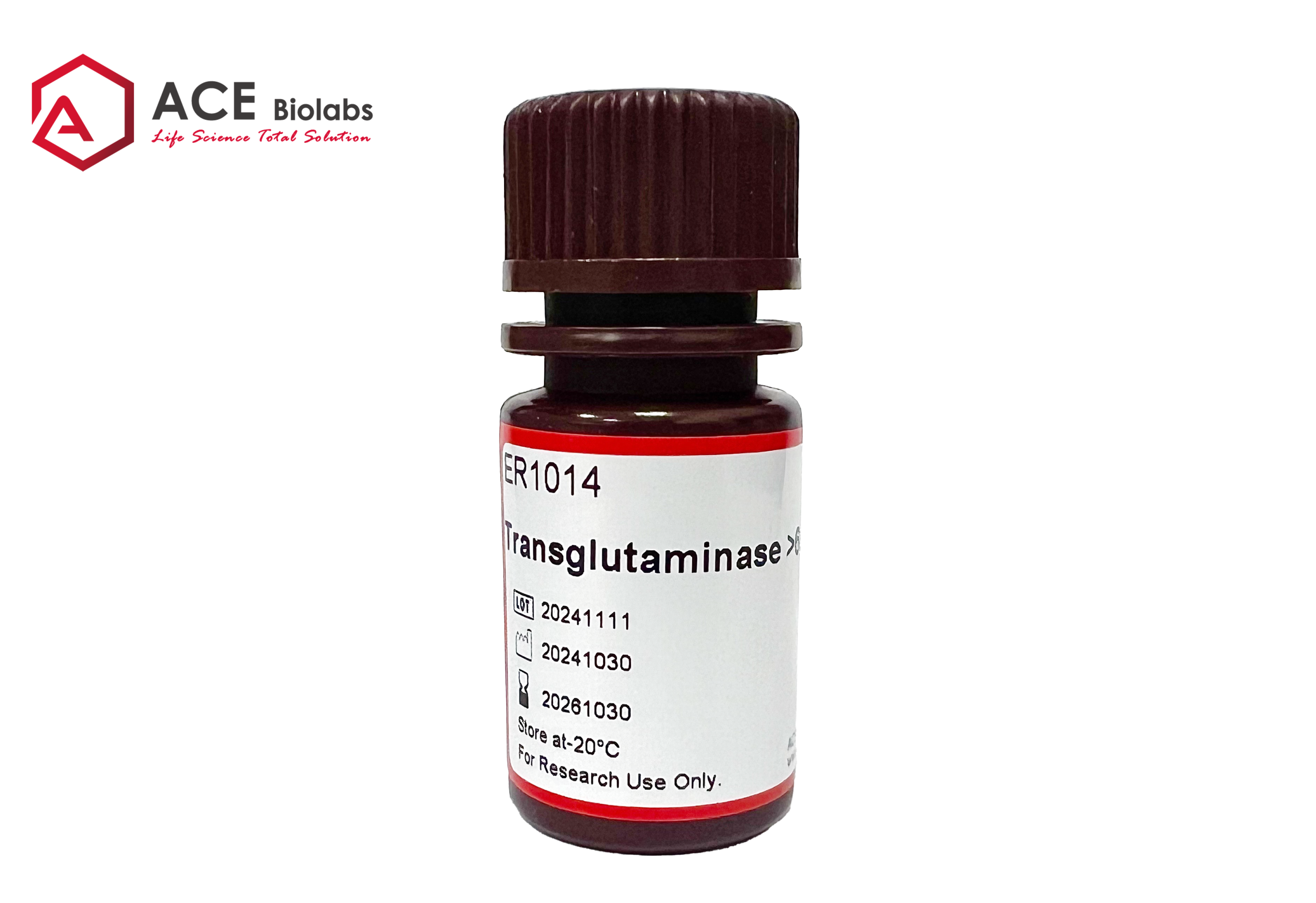Introduction
General Information
| Cas No. | 80146-85-6 |
|---|---|
| Molecular Weight | 76.6kDa |
| Storage instruction | -20°C. |
| Alias | TG;Transglutaminase; Protein-Glutamine-γ-Glutamyltransferase;Protein-glutamine:amine γ-glutamyltransferas |
Scientific Applications
Protein Modification and Labeling: TGase can link various amines to the glutamine residues on proteins, causing proteins
to cross-link or be modified. This characteristic is widely utilized in protein labeling research. For example, by attaching
fluorescent labels or other reporter molecules to proteins, it facilitates the study of protein dynamics and interactions.
Tissue Engineering and Regenerative Medicine: In tissue engineering, TGase is used to construct extracellular matrices and
scaffolds, promoting cell adhesion and growth. Researchers use TGase-prepared biomaterials to simulate natural matrices,
developing artificial organs and tissue repair technologies.
Disease Research: TGase plays a crucial role in the mechanism studies of various diseases (such as celiac disease and
Huntington's disease). TGase-induced protein cross-linking is a key factor in the pathological processes of these diseases.
Therefore, studying TGase activity and regulation mechanisms helps uncover the pathogenesis of these diseases and
develop new therapeutic strategies.
Food Science: Although more inclined towards industrial applications, TGase research in the field of food science is also
significant. Researchers use TGase to alter the structure and texture of proteins, developing new food formulations, and
improving the texture and nutritional value of food.
Technical Features
High Specificity: TGase has high specificity for glutamine and amino acid residues, ensuring reaction precision and effectiveness.Multifunctionality: TGase can act on various proteins and peptides, with applications in biomedical, material science, and food science fields.Stability: TGase is supplied in freeze-dried powder form, which has good stability and can be stored long-term at low temperatures, facilitating experimental operations for researchers.
Amino Acid Specificity
TGase primarily modifies and cross-links the glutamine (Gln) residues in proteins. Additionally, TGase can also catalyze the following amino acid residues:
- Lysine: TGase can cross-link glutamine with lysine residues, forming ε-(γ-glutamyl)-lysine cross-links. This
cross-linking plays a crucial role in protein structure stability.
- Cysteine: In certain circumstances, TGase can act on cysteine residues, forming isothiocyanate derivatives.
- Histidine: TGase can also catalyze reactions between glutamine and histidine residues, although this reaction is
relatively rare.
Unit Definition
One unit of Transglutaminase is capable of catalyzing the formation of 1.0 μmole of hydroxamate per minute from Nα-Z-Gln-Gly and hydroxylamine at 37°C and pH 6.0.








.png)